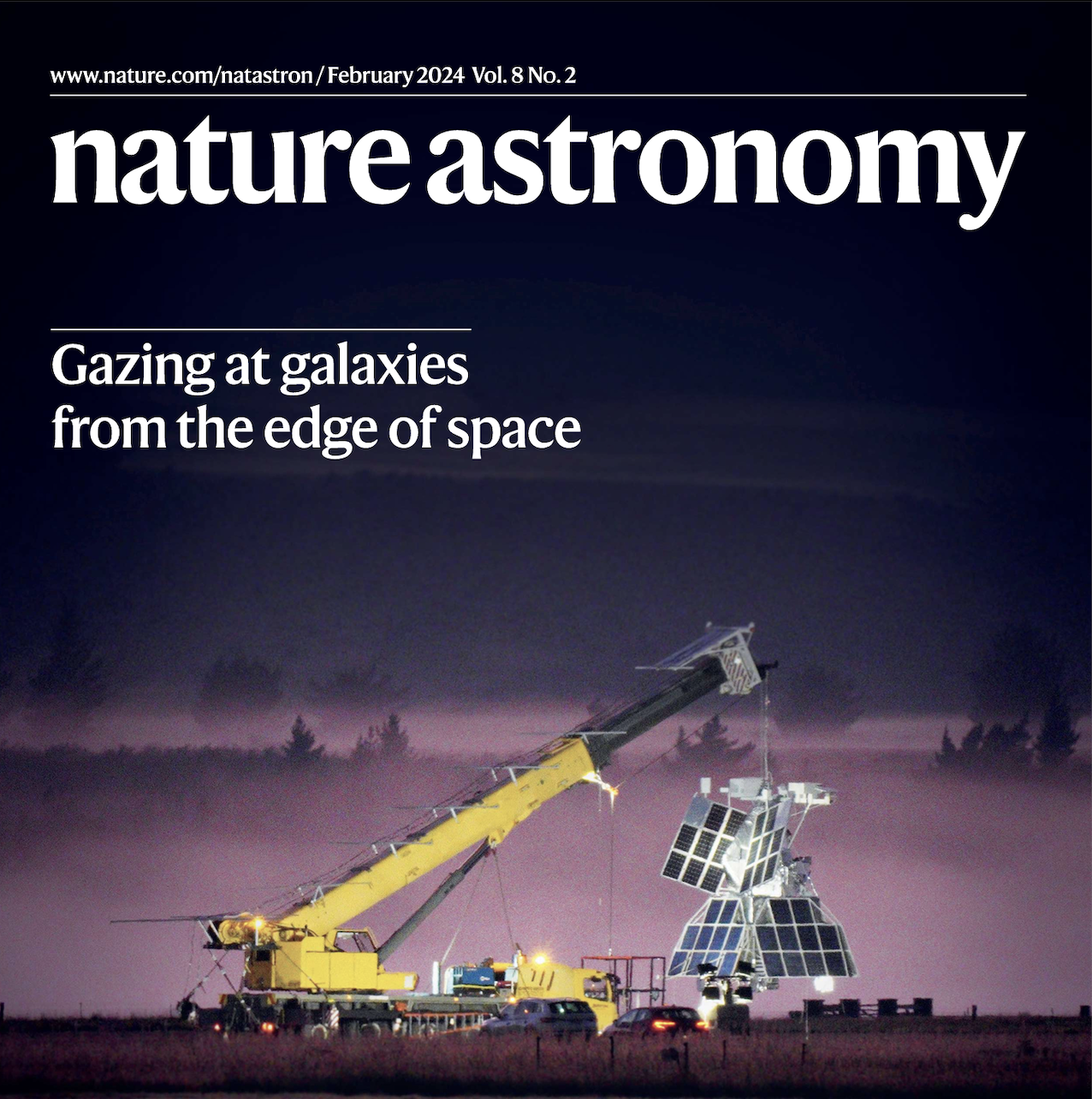Our Research
Our research program focuses on using galaxy clusters as cosmological laboratories to understand dark matter, dark energy, and the large-scale structure of the universe. We develop and apply innovative observational techniques across multiple wavelengths and platforms.
SuperBIT: Galaxy Cluster Cosmology from the Stratosphere

We are leading the weak gravitational lensing analysis of merging clusters observed with the Superpressure Balloon-borne Imaging Telescope (SuperBIT), a stratospheric NUV-to-NIR observing platform. Operating at 40km altitude above 99.5% of the atmosphere, SuperBIT provides near-space quality imaging at a fraction of the cost of satellite missions.
Our team is analyzing galaxy cluster dark matter substructure in the Local Volume Complete Cluster Survey (LoVoCCS), a volume-complete survey of all massive clusters within z < 0.10. This unprecedented dataset allows us to study the distribution and properties of dark matter on cluster scales with minimal selection biases.
We are also actively involved in the development of GigaBIT, SuperBIT's successor mission, which will provide even higher resolution and sensitivity for cluster observations. This next-generation balloon-borne telescope will revolutionize our ability to map dark matter distributions in galaxy clusters.
Key Science Goals:
- Map dark matter distributions in merging galaxy clusters
- Measure cluster mass functions and scaling relations
- Study the properties of dark matter subhalos
- Constrain cosmological parameters through cluster abundance
COSMOS-Web: Gravitational Lensing and Cosmology with JWST

As Co-I in COSMOS-Web, the largest JWST NIRCam and MIRI survey of the COSMOS field, our group specializes in PSF characterization for gravitational lensing analysis. The unprecedented resolution and sensitivity of JWST allows us to probe weak lensing signals with higher precision than ever before.
We are leading a cosmological parameter estimation effort using 3x2-point correlation functions of COSMOS-Web galaxy shapes and positions. This analysis combines galaxy clustering, galaxy-galaxy lensing, and cosmic shear measurements to provide powerful constraints on cosmological parameters, particularly helping to address the "S8 tension" between early and late universe measurements.
Our PSF modeling techniques ensure that systematic errors from telescope optics and detector effects are properly accounted for, enabling percent-level precision in weak lensing measurements across the entire COSMOS-Web survey area.
Key Science Goals:
- Develop advanced PSF models for JWST weak lensing
- Measure cosmic shear power spectrum to z~3
- Constrain σ8 and Ωm through 3x2pt analysis
- Test dark energy and modified gravity models
Circumgalactic Dust Halos

We have recently begun exploring the presence and properties of dust in the extended circumgalactic medium (CGM) and intergalactic medium (IGM). This dust, extending to megaparsec scales around galaxies, challenges our understanding of dust formation and survival in low-density environments.
Our research focuses on understanding how this extended dust affects distance measurements to supernovae and other standard candles. By studying the correlation between dust extinction and host galaxy properties, we aim to improve the accuracy of cosmological distance measurements and reduce systematic uncertainties in dark energy constraints.
This work has important implications for precision cosmology, as unaccounted circumgalactic dust could introduce systematic biases in supernova cosmology and other distance-dependent measurements. Our analysis provides crucial calibrations for next-generation surveys.
Key Science Goals:
- Map dust distribution in the circumgalactic medium
- Quantify dust effects on supernova distance measurements
- Study dust properties as a function of galaxy type and environment
- Develop corrections for dust extinction in cosmological analyses